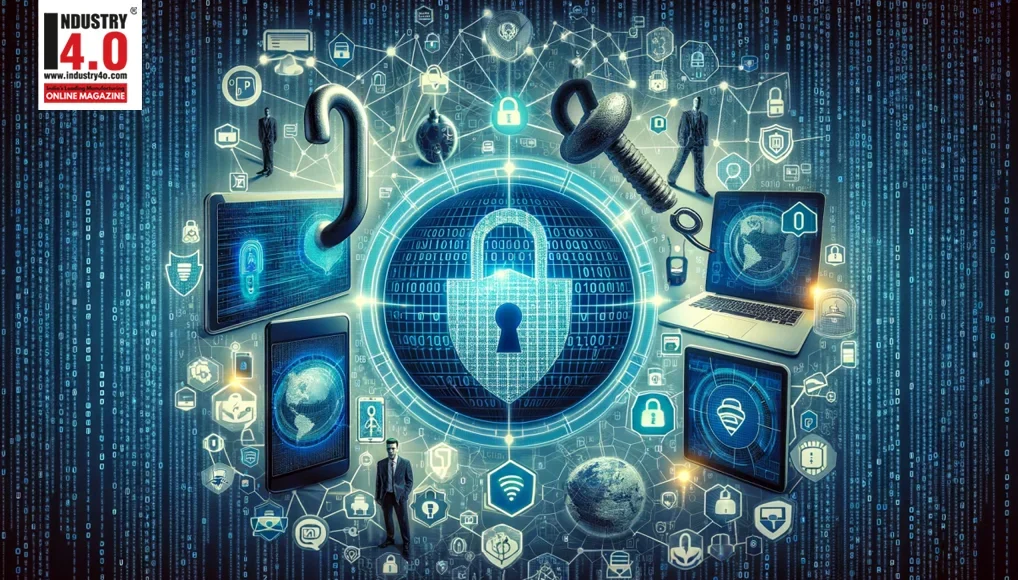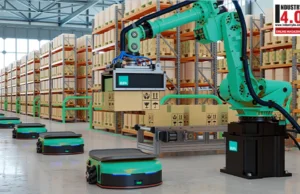Industry 4.0 – Cybersecurity Challenges & Solutions
by
Prof. Ajay Singh Award Winning Author/Former CEO/Fellow Institute of Directors / Visiting Professor/ Member of IEEE Committee on Cybersecurity for Next Generation Connectivity Systems/ Member of The Academic Advisory Board-Pace University-Seidenberg School of Computer Science and Information Systems, New York.
Industry 4.0 is transforming the manufacturing industry as never before. Often referred to as the latest phase of the Industrial Revolution, it brings together machines, people, and physical assets into an integrated digital ecosystem. It also incorporates innovative technologies like Internet of Things (IoT), cloud computing, artificial intelligence (AI), and machine learning to enhance productivity, flexibility, and agility. Forces driving Industry 4.0 include are competitiveness, innovation, quality improvement, cost reduction, and overall performance improvement. Smart factories integrate their IT (Information Technology) systems and their OT (Operation Technology) systems; are equipped with advanced sensors, embedded software, and robotics; and can collect and analyze data in real time as well as combine data from production operations with information from enterprise systems allows for better decision-making.
One important aspect that is key to success of Industry 4.0 initiatives is cybersecurity. Cyberattacks on smart manufacturing systems can have devastating and detrimental consequences that could affect key components of operations, productivity, and safety. Security breaches could lead to the following potential harms:
Disruption in production processes – Spread of malware including ransomware which could halt production or distribution lines. The Colonial Pipeline ransomware attack of May 2021 led to the shutting down of the distribution pipeline that supplies fuel to the east coast of the United States resulting in fuel shortages across seventeen states.
Tampering with control systems – This can cause erratic behaviour in machinery affecting product quality. Attacks that alter production parameters can lead to defective products which could harm brand reputation and customer trust.
The Florida Oldsmar cyber-attack where attackers upped sodium hydroxide levels in the Oldsmar, Florida, water supply to extremely dangerous levels which would have affected 15,000 people who were its consumers. Fortunately, this was discovered and corrected by a vigilant employee.
Safety Risks- Manipulating sensors or actuators can lead to unsafe conditions. For example, altering temperature controls in chemical plants can cause explosions.
Environmental Impact-Tampering with waste management systems can cause increase in pollution. Further, disrupted processes may lead to resource wastage.
Other harms include financial losses, lawsuits, theft of Intellectual Property, and loss of customer trust.
As Industry 4.0 expands and smart technologies are increasingly deployed, there is a resultant increase in attack surface. More smart devises and systems means more opportunities of cybercriminals to find new opportunities. The use of sensors, remote access, and interconnected devices can create entry points for attacks. Staying informed about existing and emerging cyber threats and implement robust access controls mechanisms, deploying intrusion detection systems, and limiting access privileges can all help enhance security levels.
To safeguard smart manufacturing systems, robust cybersecurity measures are essential. Ensuring security of a system or solution, both in the context of Industry 4.0 requires commitment and funding from top-level management. However, while management are keen on benefiting Industry 4.0 initiatives in the form of better productivity and higher profits, they are often not as forthcoming when it comes to making cybersecurity investments. It often takes an adverse security incident which leads to financial losses that due consideration to cybersecurity is given. Securing adequate funding and striking the right balance between the costs and the need for security remains the first big challenge.
Technical challenges include identifying the weak links and vulnerabilities. Industry 4.0 systems are only as strong as their weakest point. Vulnerabilities in any component can compromise the entire ecosystem. Prioritizing security across the entire value chain and regularly assessing and strengthening security measures at every level is necessary. In the world of IoT and Industry 4.0, where complex and highly automated supply chains are in operation with several actors involved cybersecurity is a shared responsibility. The deployment of Artificial Intelligence and Machine Learning powered security solutions and combining them with contemporary security approaches like zero-trust can contribute to a more secure architecture and ensure higher levels of security and safety.
Many organizations lack awareness about the specific risks posed by Industry 4.0 technologies. When it comes to cybersecurity, people are often considered to be the weakest link. Additionally, one of the biggest difficulties in ensuring security in Industry 4.0 comes from lack of technical capabilities of connected industrial devices and systems, especially considering integration with legacy infrastructures. Organizations should invest in cybersecurity training and awareness programs. Collaborating with experts and fostering a security-conscious culture is crucial.
Integrating security into the design phase is often overlooked. Retrofitting security after deployment is less effective. Considering threat modelling and risk assessments early on can help in embedding security principles during the design and development of Industry 4.0 systems. Similarly, the importance of data protection through encryption must not be overlooked. Data transmitted across interconnected devices must be encrypted to prevent unauthorized access. Implementing strong encryption protocols and secure communication channels must be looked at as an essential requirement.
In a rapidly changing technological landscape, a major challenge is to ensure that existing technologies, both hardware and software are supported by their vendors and suppliers. Often legacy systems support is discontinued without adequate notice which means that vulnerabilities will remain unaddressed. Organizations must keep track of components that are not supported and devise their own security mechanisms for the same before they transit to newer systems. Establishing a robust patch management process where updates are available and applied to software, firmware, and security configurations can prevent cyber threats from transforming into full blown cyber-attacks.
Finally, a Defence- in-depth (DiD) strategy that works on the principle of multiple layers of defence rather than a single layered defence and leverages multiple security measures to protect an organization’s assets is absolutely essential to not only ward off external threats but to even mitigate risks from internal threats caused due to such as negligence or employee errors that can lead to security breaches. This approach can provide comprehensive protection that covers endpoints, applications, and networks along with traditional defences include antivirus software, firewalls, secure gateways, and virtual private networks (VPNs).
To fully realise the benefits of Industry 4.0, organizations must prioritize cybersecurity. Following industry standards and best practices can be an important means to address current and emerging challenges for safeguarding their digital assets. Remember, that while Industry 4.0 can revolutionize manufacturing, a strong cybersecurity foundation is critical to its success.
About the Author:

Member of the Board of Studies ( Faculty of Science & Technology ) – ICFAI University, Jharkhand
Member of Board of Advisors – WOPLLI Technologies
Member Of The Board Of Advisors – Pace University – Seidenberg School of Computer Science and Information Systems
Prof. Ajay Singh has spent over 35 years in the IT industry in different roles and was the CEO of an award winning fintech company for over a decade. He is a certified corporate director and Fellow of the Institute of Directors. He serves as a Corporate Advisor & Mentor.
Prof. Ajay Singh has a master’s degree from Sheffield-Hallam University, UK and has further specialized in Cybersecurity, Cyber Law, and Cyber Forensics.
Prof. Ajay Singh has authored multiple books on cybersecurity. He is an Award-Winning Finalist for his book CyberStrong (SAGE 2020) at the International Book Awards, American Book Fest 2022. His book Introduction to Cybersecurity-Concepts, Principles, Technologies, and Practices (Universities Press, Orient BlackSwan 2023) is a winner of the Golden Book Award 2024.
Prof. Ajay Singh is a Member of the Academic Advisory Board of the Pace University–Seidenberg School of Computer Science and Information Systems, New York, Member of the Board of Studies, Faculty of Science & Technology, ICFAI University, Jharkhand
Member of IEE Committee on Cybersecurity for Next Generation Connectivity Systems. He is also a visiting professor for Cybersecurity and Entrepreneurship at leading Management Institutes.
Prof. Ajay Singh is Bestowed with the following Licences & Certifications :
https://www.linkedin.com/in/aj
Prof. Ajay Singh is Accorded with the following Honors & Awards :
https://www.linkedin.com/in/prof-ajay-singh-a597111/details/honors/
Prof. Ajay Singh is Volunteering in the following International Industry Associations & Institutions :
https://www.linkedin.com/in/prof-ajay-singh-a597111/details/organizations/
Prof. Ajay Singh can be contacted at :












